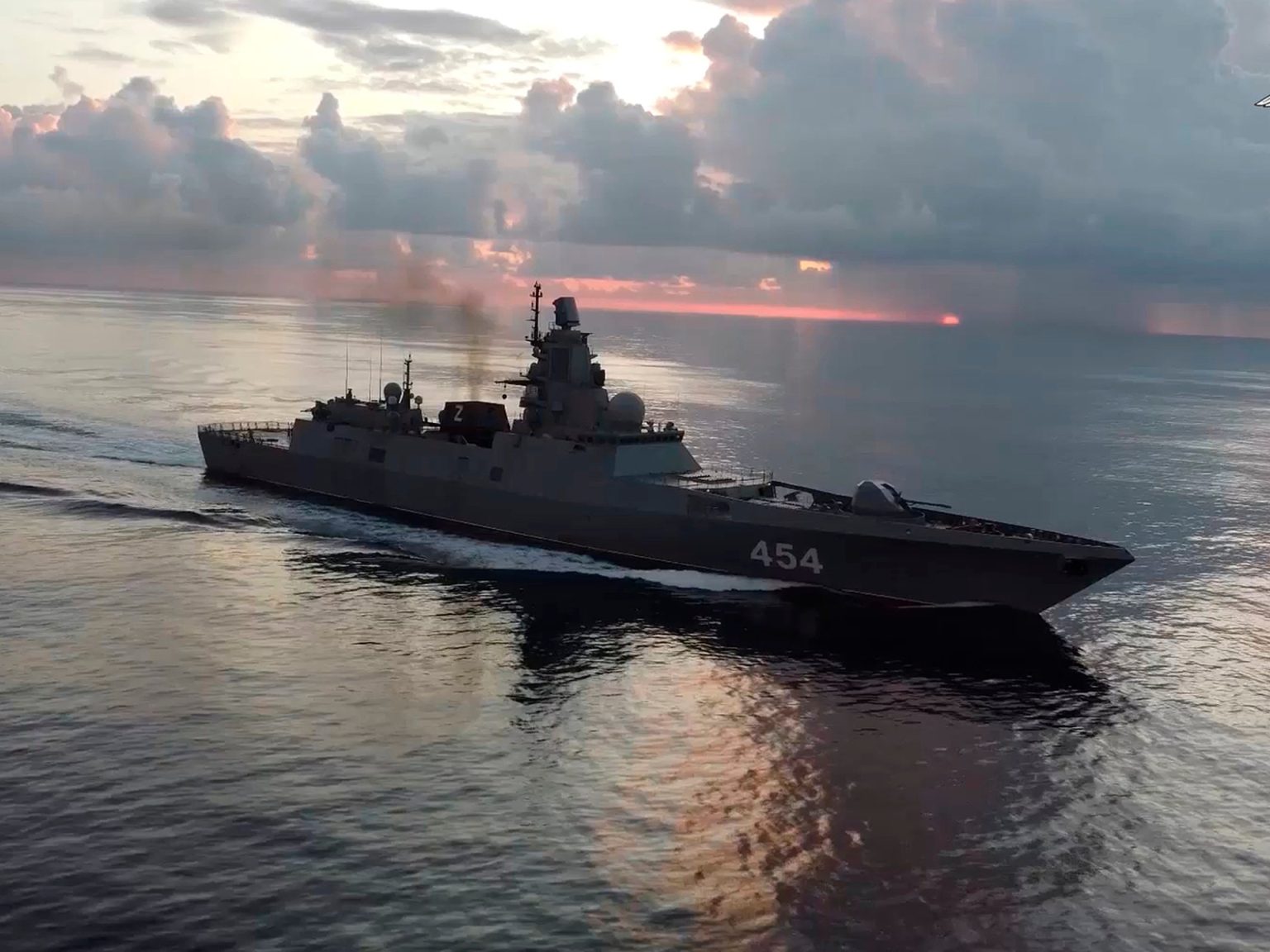A Russian naval frigate and a nuclear-powered submarine have conducted missile drills in the Atlantic Ocean on their way to Cuba, practicing firing high-precision missiles at mock enemy targets from a distance of over 600km. The Admiral Gorshkov also practiced repelling an air attack. These exercises are part of a group of four Russian vessels scheduled to arrive in Cuba on Wednesday. Cuba has stated that such visits are standard for naval units from friendly countries and that the ships do not carry nuclear weapons or pose a threat to the region, despite being closely monitored by the United States due to tensions with Russia over the war in Ukraine.
The Admiral Gorshkov is armed with new Zircon hypersonic missiles, designed to target sea and ground-based enemies. These missiles are touted by Russian President Vladimir Putin as a potent weapon capable of penetrating any existing antimissile defenses by flying nine times faster than the speed of sound over a range of more than 1,000km. The Russian warships visiting Cuba, including the Kazan submarine, are accompanied by two support ships and their presence in Havana is seen as a symbol of the historically strong relations between Russia and Cuba. The Cuban Foreign Ministry confirmed that the ships will be in Havana until June 17.
While this is not the first time Russian warships have visited the Caribbean, the timing of this visit is particularly significant as it comes after Putin’s warning that Moscow may respond to Ukraine’s Western allies allowing Kyiv to use their weapons against Russia by providing similar weapons to adversaries of the West globally. This visit is also seen as Russia showcasing its capability for global power projection. The US Navy, while not viewing the visit as threatening, will closely monitor the drills and activities of the Russian vessels in Cuban waters. The context of heightened tension between the US and Russia adds to the scrutiny of this naval visit to Cuba.
Cuba has affirmed that the Russian warships are in compliance with existing agreements and protocols for visits by naval units from friendly countries. The Cuban government has emphasized the peaceful nature of the visit and the longstanding friendship between Russia and Cuba. The statement from the Cuban Foreign Ministry regarding the visit highlights the positive and cooperative relations between the two countries. This visit represents a continuation of the strong bilateral ties between Cuba and Russia, with the historical friendship being reinforced by the presence of Russian warships in Cuban waters.
The presence of the Admiral Gorshkov armed with Zircon hypersonic missiles and the Kazan submarine conducting missile drills in the Atlantic en route to Cuba underscores Russia’s military capabilities and its readiness to demonstrate power projection globally. The Russian Ministry of Defence’s statement on the exercises and drills conducted by the Russian naval vessels on their way to Cuba reflects a strategic, coordinated effort to showcase Russia’s military prowess. The visit to Havana by the Russian warships serves as a diplomatic and symbolic representation of the enduring friendship and cooperation between Russia and Cuba, while also being subject to careful monitoring by the US Navy, given the current geopolitical tensions between the US and Russia over the situation in Ukraine.


